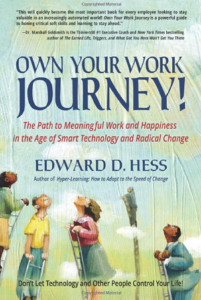Who would have thought empathy and the fast pace of the rat race would have much to do with one another, let alone share a symbiotic relationship? Count me out if your answer was yes. But that’s exactly what David Kurkjian brilliantly demonstrates in his new book, titled 6x Convert More Prospects to Customers: A Road Map for Early-Stage Sales Conversations. As the wording suggests, Kurkjian writes that maintaining corporate productivity in an increasing remote, digitized, and postmodernist landscape is to fire on all cylinders. That means approaching sales and customer bases from a humanist angle, as that not only can ensure customer loyalty in the long run, but simultaneously keep the corporate wheel turning twice – if not, six times as fast as it did prior to.
RELATED URL: https://ceoworld.biz/author/david-kurkjian/
The intricacies to be explored and mapped in the spirit of this don’t just boil down to the numbers and stats, but psychology and science related to various aspects – literally – of the human mind. “It’s important to have a basic understanding of decision-making as it relates to the human brain. There are three major parts of the brain: the cerebral cortex, the limbic system, and the amygdala. We’ll look closely at the role that each of these parts of the brain play when a human being is trying to make a decision,” Kurkjian writes in a key passage. “…The cerebral cortex is the largest part of the human brain. It’s the wrinkled outermost portion of the brain. Its function and role are focused primarily on logic and reason.
Think of it as the onboard computer for the human brain. The cerebral cortex is responsible for executive function, language, memory, and a whole host of high-level processing and thinking…Keep the words and concepts that you use in a conversation simple. The ability to take complicated concepts and ideas and communicate them in a way that is simple is an important element of being successful. It is a sign of higher emotional intelligence. It’s the ability to take complex concepts and make them simple. This is especially true in communicating with prospects and customers. Stay away from words and concepts that would lead your prospect to ask the question, ‘What does this mean?’”
“If you do get that question in a conversation, pay attention to what you just said that caused your prospect to ask what you mean,” he adds. “What you’ll typically find yourself doing is answering them with an analogy or metaphor that they’re familiar with to create understanding. In the future, use that same analogy or metaphor with other prospects to explain the concept you’re trying to communicate instead of what you previously used that caused confusion…Think about the world that you live in without air conditioning:
AMAZON: https://www.amazon.com/6X-Prospects-Customers-Early-Stage-Conversations/dp/1958211168
Driving to work in sweltering heat and humidity; walking into an office only supplied with fans; and spending the day in a suit and tie in unbearable heat. This was the reality before the 1950s. Now contrast that with the world that we live in today. In the middle of summer when it’s hot and humid and you find yourself walking inside to an air-conditioned room, you experience instant value in the contrast between hot, humid air and dry, cool air. Keep in mind the contrast must be immediate. If you walked inside the building and had to wait a couple of hours for the air to be cooled, the value would not be the same. There’s a formula you can use to determine the perceived value for your product and service as it relates to your prospect…
Any time you start a conversation with a prospect, they have an understanding of their present state…However, most prospects don’t really understand the impact of their present state. This gives you an opportunity to ask questions that cause them to understand that the challenges they face today are actually worse than what they had imagined. By asking these questions, their understanding of their present state starts to move to the left, and now when you flip the conversation to describe the future state, the perceived value is much higher.”
Cyrus Rhodes



























